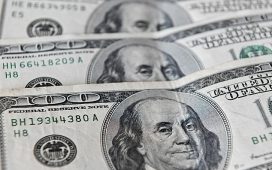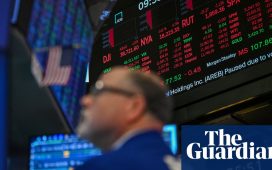1. What’s the ‘whole nation’ strategy?
It stems from the country’s tradition of central planning, which lingers even though Communist China has largely become a market economy. At this year’s National People’s Congress, outgoing Premier Li Keqiang described the strategy as encouraging private capital to collaborate on major government initiatives aimed at addressing areas of weakness. For example, cities and state-owned telecommunications companies awarded lucrative contracts to private tech giants like Huawei Technologies Co. and Hangzhou Hikvision Digital Technology in 2020 to lay fifth-generation wireless networks, install cameras and sensors, and develop artificial intelligence software.That was to underpin autonomous driving, automated factories — and mass surveillance. The estimated price tag was $1.4 trillion. A year later, China’s new five-year economic plan included more pledges to promote research into cutting-edge chips and emerging fields such as hydrogen-powered vehicles and biotechnology. Xi also has ordered the Communist Party to exercise more control over the science and technology agenda to better coordinate efforts. At the NPC in March, the party established a central technology commission to enhance oversight and gave the Ministry of Science and Technology expanded powers to help drive fundamental innovation. It also established a national agency to police and develop data as a strategic resource.
2. How far behind is China?
China’s aspiration to become a true tech rival to the US faces deep challenges. Chief among them: the country doesn’t control its supply of the semiconductors that are the brains of modern electronics. In 2021, the Chinese economy spent more than $400 billion buying chips based largely on Western technology — more than it spent on oil. But in other areas, China is moving quickly. A January report from the Information Technology & Innovation Foundation, a Washington-based, nonpartisan think tank, concluded China was rapidly evolving from an imitator to an innovator in advanced industries from supercomputers to EVs to smartphones, threatening US market share as well as national security. China completed its own space station last year, and the US Defense Intelligence Agency said in March that China was in the lead in developing hypersonic weapons.
3. How is it trying to catch up?
Among other avenues, it’s opening the taps, with several programs that are collectively disbursing trillions of dollars:
The US is engaged in what it terms “strategic competition” with China, limiting not just chips but chip-making equipment and design software that can be exported to Chinese customers. It also has enlisted allied countries so that suppliers like ASML Holding NV in the Netherlands and Japan’s Nikon Corp. join its technology blockade. US National Security Advisor Jake Sullivan has said the US and its allies want to maintain “as large a lead as possible” in key technologies so as “to impose costs on adversaries, and even over time degrade their battlefield capabilities.” Meanwhile, the Chinese government’s hefty investments have borne little fruit, with state champions including Huawei, Semiconductor Manufacturing International Corp. and Yangtze Memory Technologies Co. struggling to advance their products. Xi has railed against what he calls the US policy of “containment and suppression.” A flurry of anti-graft probes last year that targeted people connected to the state’s secretive investment vehicle, known as the Big Fund, was seen as reflecting official frustration. This year, China was said to be looking at alternative ways to boost industry, such as lowering the cost of materials. It’s unclear though whether Beijing is ready to ditch entirely the investment-heavy approach that worked so well in propelling its manufacturing sector over past decades. Yangtze, China’s best shot at making memory chips for smartphones and computers, got a pledge of $1.9 billion in additional state capital this year to help it expand capacity.
Signals have been decidedly mixed, as they usually are in China’s opaque system:
• Bao Fan, a star tech industry banker, “disappeared” in February as part of what was later said to be a government investigation. A month later, a major player in seeding China’s domestic chip industry, Chen Datong, was reported to have been released after eight months of detention.
• Newly appointed Premier Li Qiang voiced his “unwavering support” for the private sector, and the central bank announced it was exploring ways to support tech companies, just after China exerted further control over Alibaba by taking a so-called “golden share” in its media business unit. That preceded the unveiling in March of a six-way split that will likely usher several of Alibaba’s businesses onto public markets.
More stories like this are available on bloomberg.com









